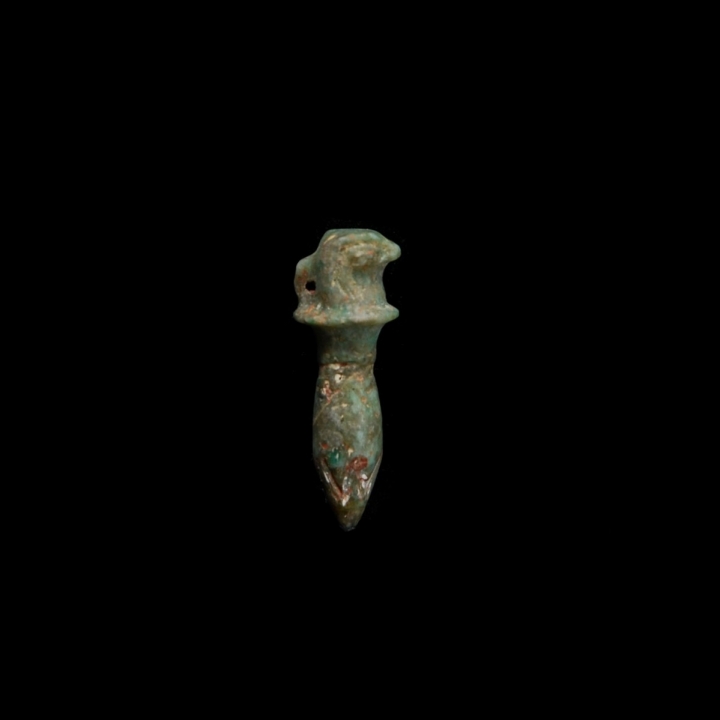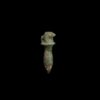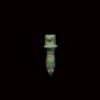Rare Wadj Amulet with a Falcon Head
Culture: Egyptian
Period: Late Period, 664-332 B.C.
Material: Feldspar
Dimensions: 3.3 cm high
Price: Sold
Ref: 1274
Provenance: Collection Ezeldeen Taha Eldarir, acquired on 15 May 1930 from Salahaddin Sirmali in Cairo and then brought to the USA.
Condition: Intact
Description: Amulet of light green stone, possibly feldspar, in form of a papyrus sceptre. On top sits a falcon head with a tripartite wig symbolizing the god Horus. The papyrus stem stands for the word wadj – "to be green, to be young”. The holder of the amulet therefore hopes for everlasting youth. The wadj amulet counts besides the udjat eye and djed pillar as one of the most common mummy amulets and was mostly placed in multiple designs on the mummy. Wadj amulets are due to their importance worked out in green faience or green stone like green schist, jadeite or feldspar. The first known wadj amulet originates from Tutankhamun’s funerary treasures. As soon as it was not exclusively reserved for royal families or priests it became one of the most popular amulets, which was used until the Roman period. This rare version in connection with Horus refers to the special relation between Isis’s son and papyrus. To protect him from Set's revenge Isis hid her son in the swamps of Chemmis where he could tuck behind papyrus bushes. On the back of the falcon head an eyelet for suspension. On the shaft tip incised leaf decoration with color remains. See for type reference the amulet in the Egyptian Musem in Cairo with inventory number CG 12915.





